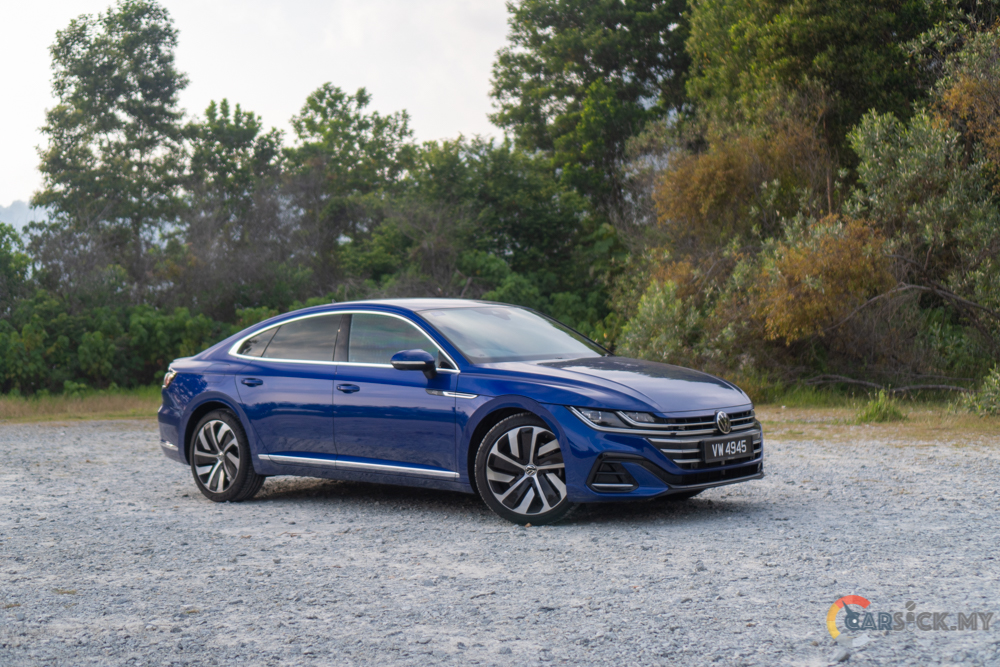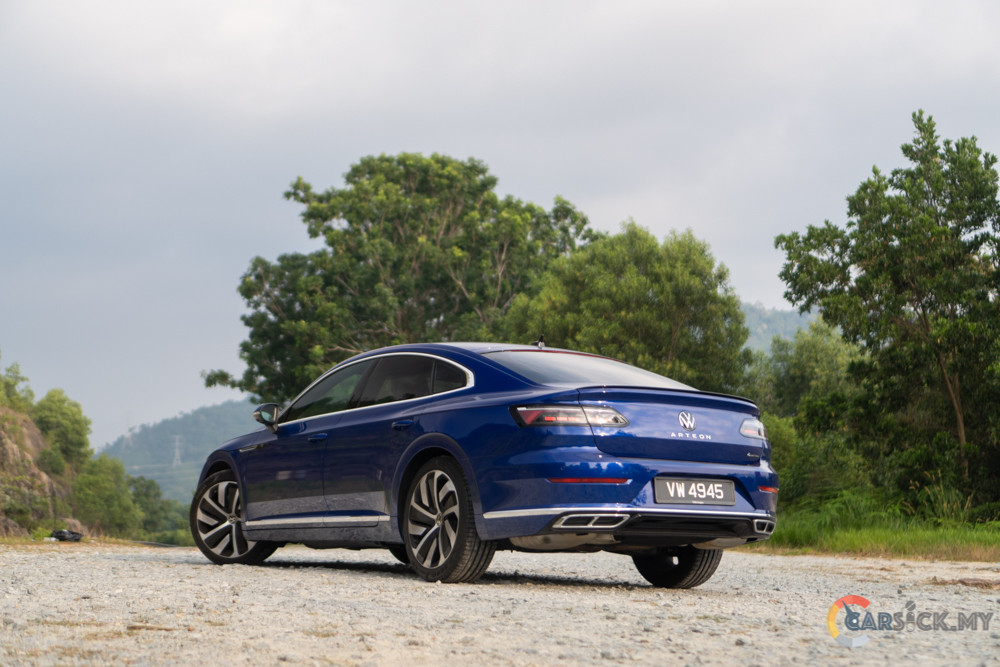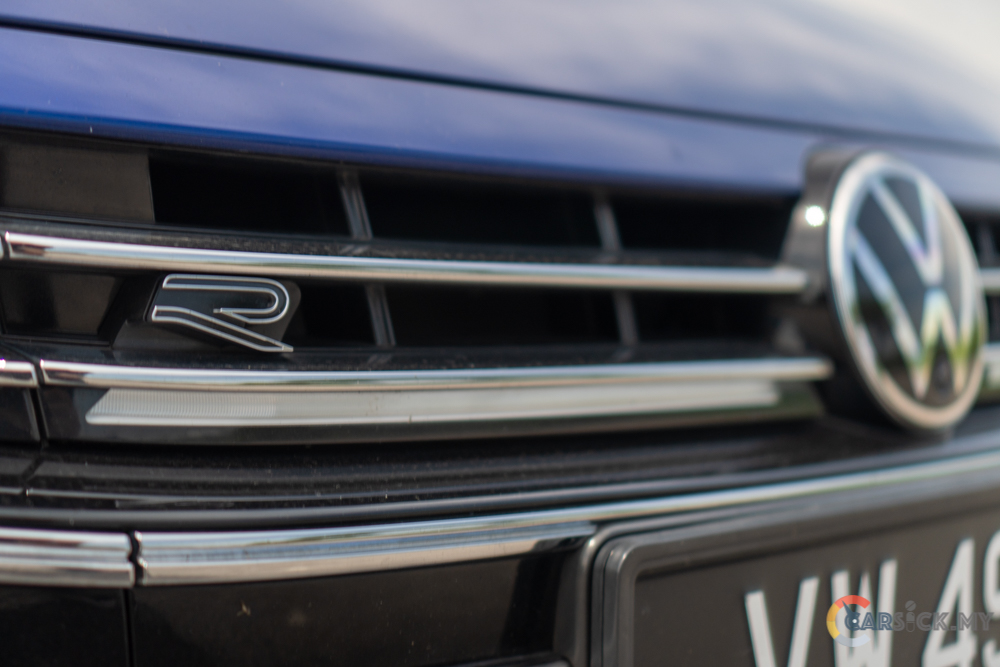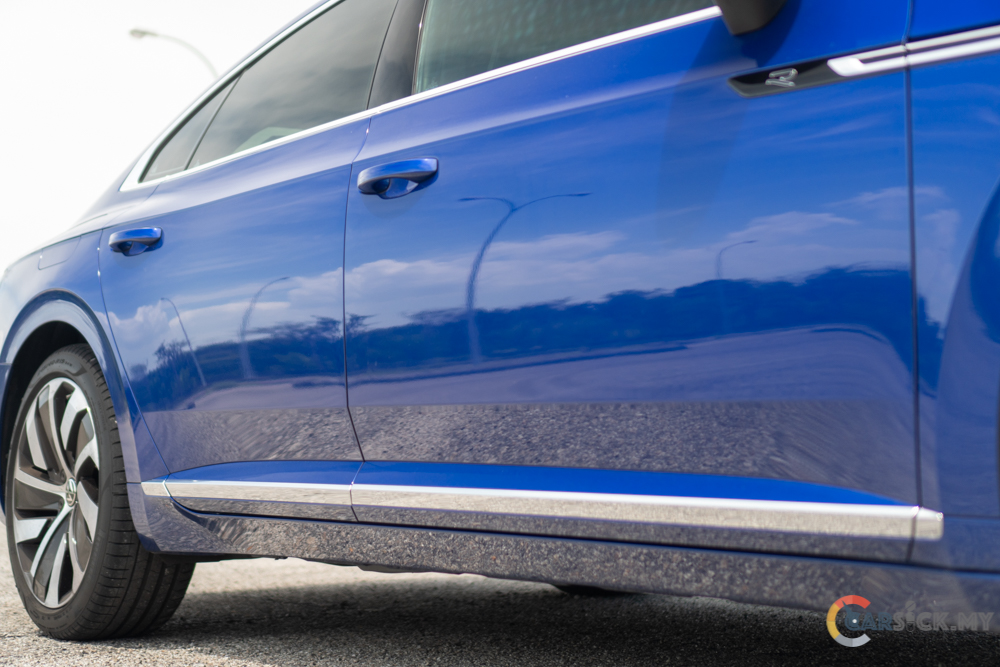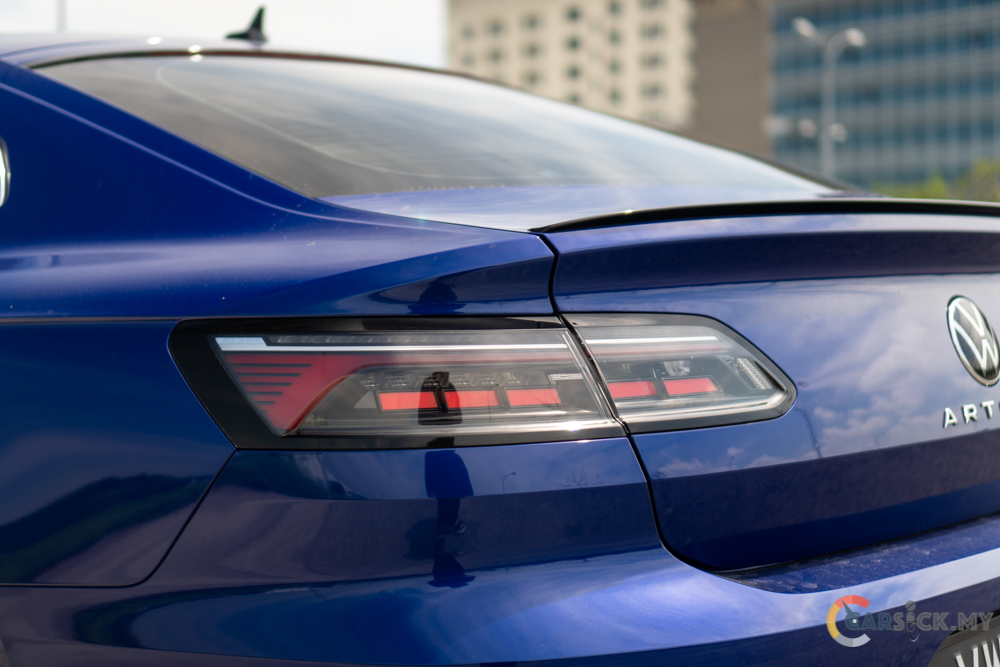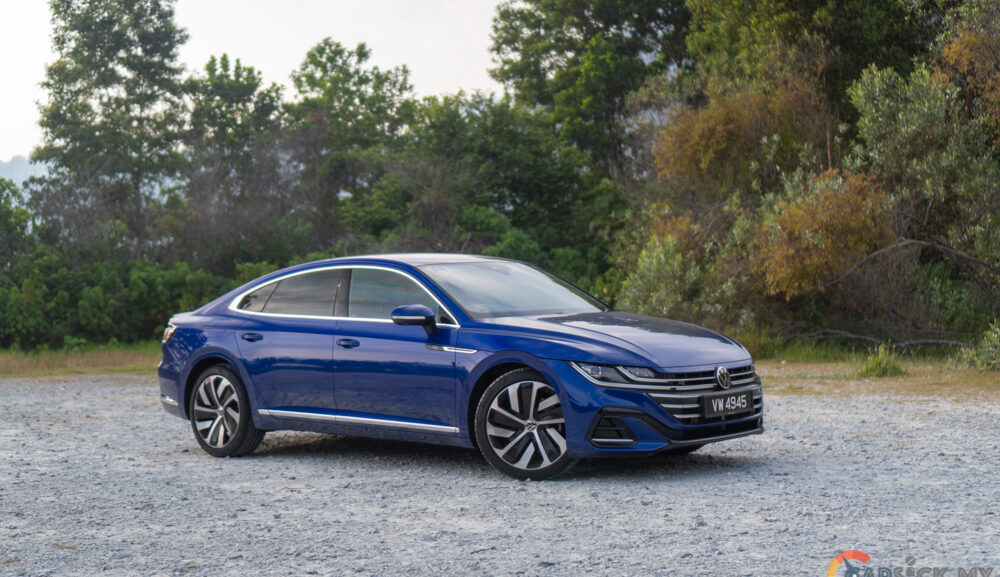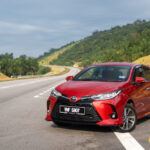Ever since Volkswagen unveiled the Arteon back in 2017, it became the talk of the town due to the sharp and sporty look of the vehicle. 5 years down the road, the Arteon still looks appealing to many buyers that Volkswagen only needs to add some minor updates to make the car look fresh again. This means that Volkswagen designers have done a great job in designing this vehicle. This is finally my chance to see if this car is just a looker or it has more up its sleeve.
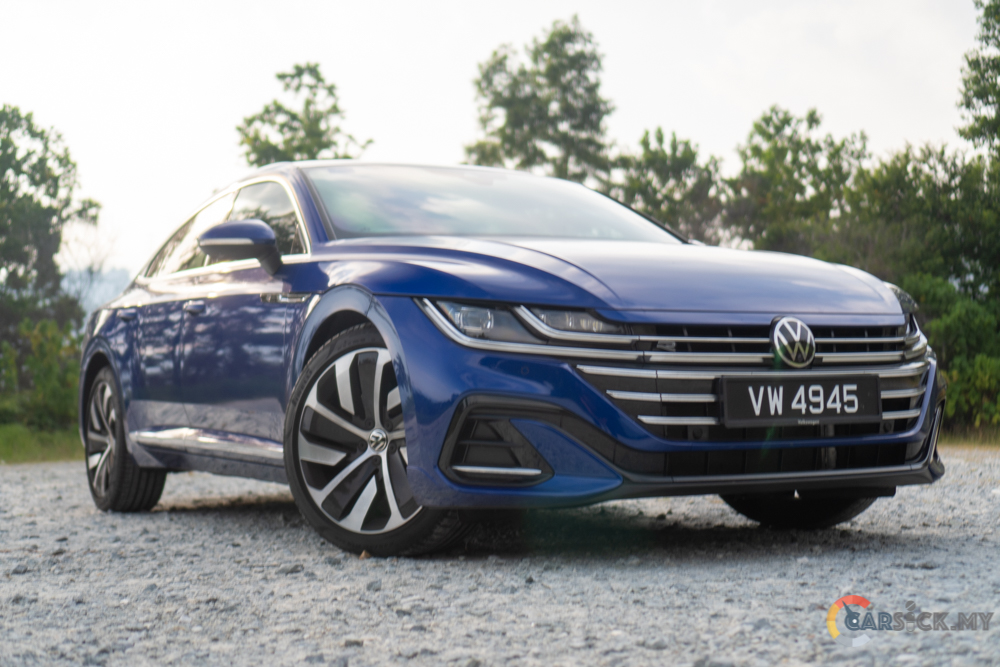
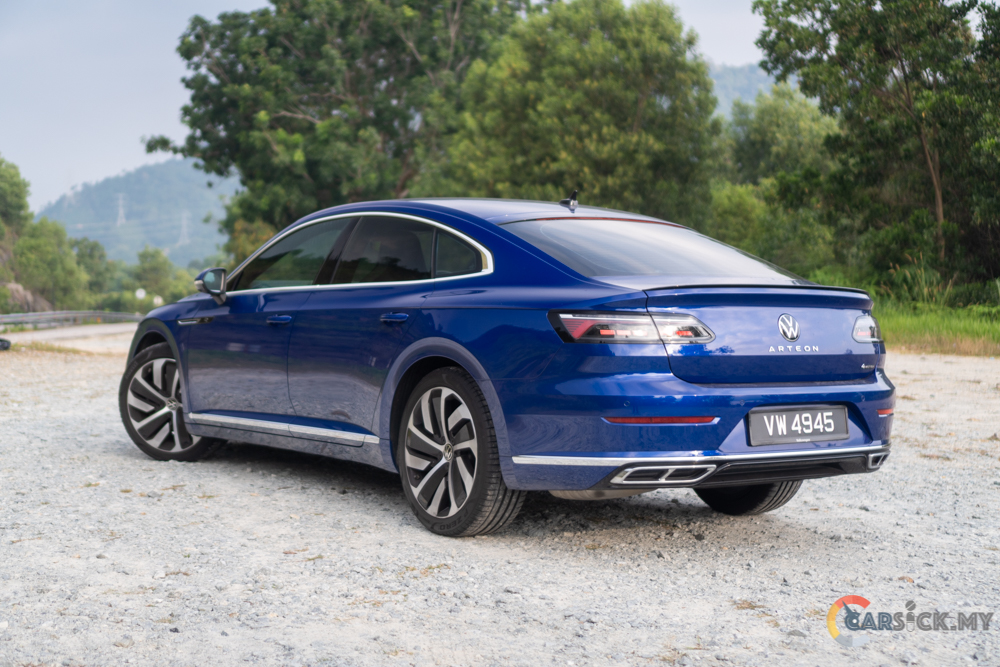 From far, the Arteon may not look like a huge vehicle. But in reality, the size of the Arteon is comparable to any D-segment vehicle. The Arteon comes in a sleek profile, and it’s being categorized as a 4-door coupé. At the front, the car comes with a clamshell hood that is reminiscent of the Audi R8. Apart from that, the Arteon is fitted with a pair of sleek looking LED headlights that enhances the sharp look of the vehicle. For the 2022 update, the Arteon now features a full width LED light bar that links both headlights together.
From far, the Arteon may not look like a huge vehicle. But in reality, the size of the Arteon is comparable to any D-segment vehicle. The Arteon comes in a sleek profile, and it’s being categorized as a 4-door coupé. At the front, the car comes with a clamshell hood that is reminiscent of the Audi R8. Apart from that, the Arteon is fitted with a pair of sleek looking LED headlights that enhances the sharp look of the vehicle. For the 2022 update, the Arteon now features a full width LED light bar that links both headlights together. 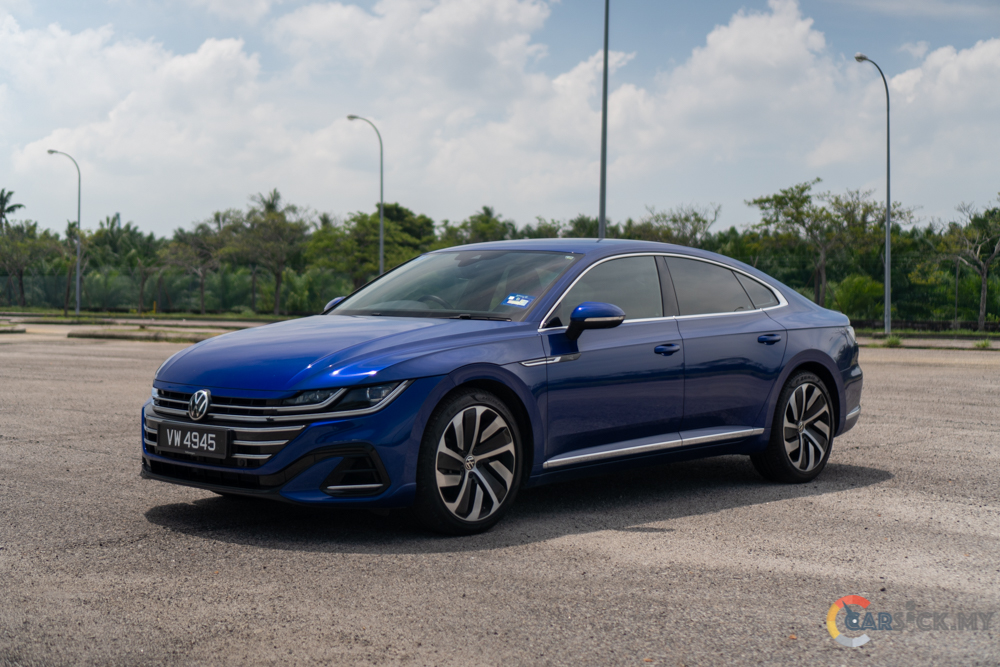
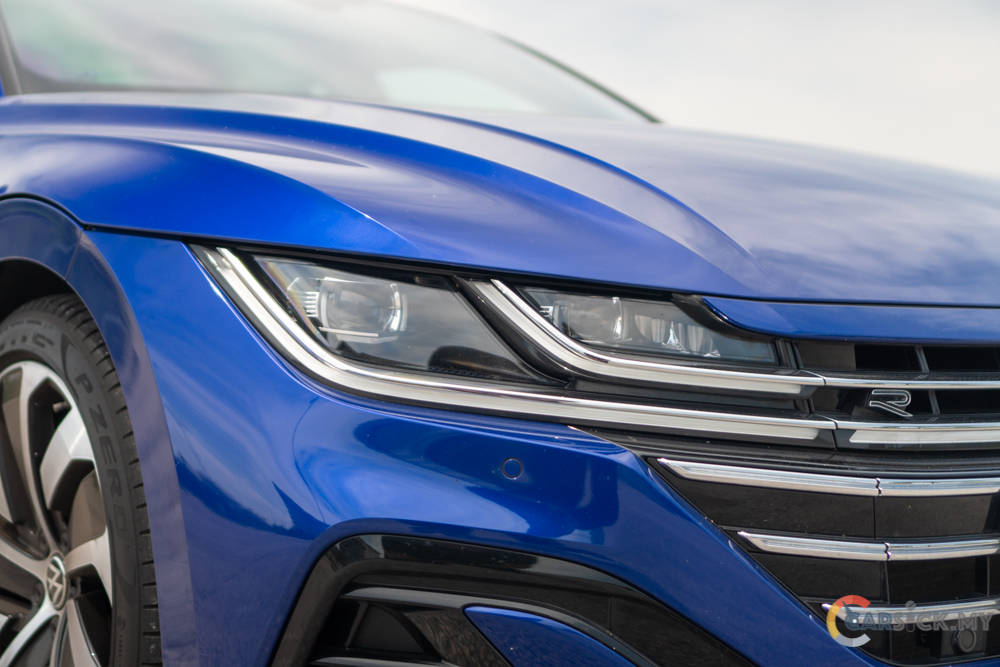
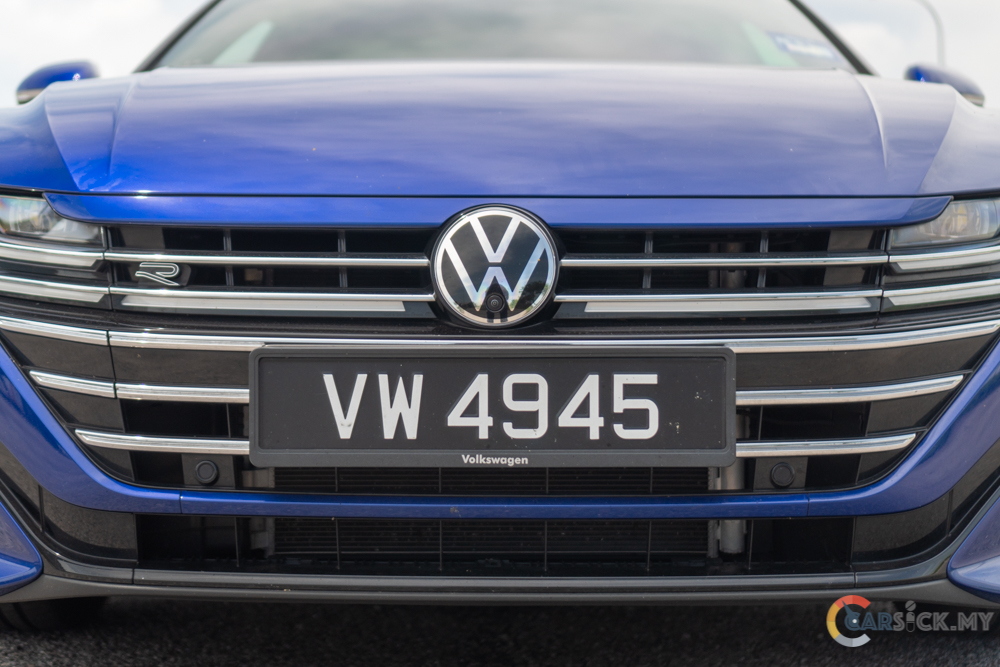
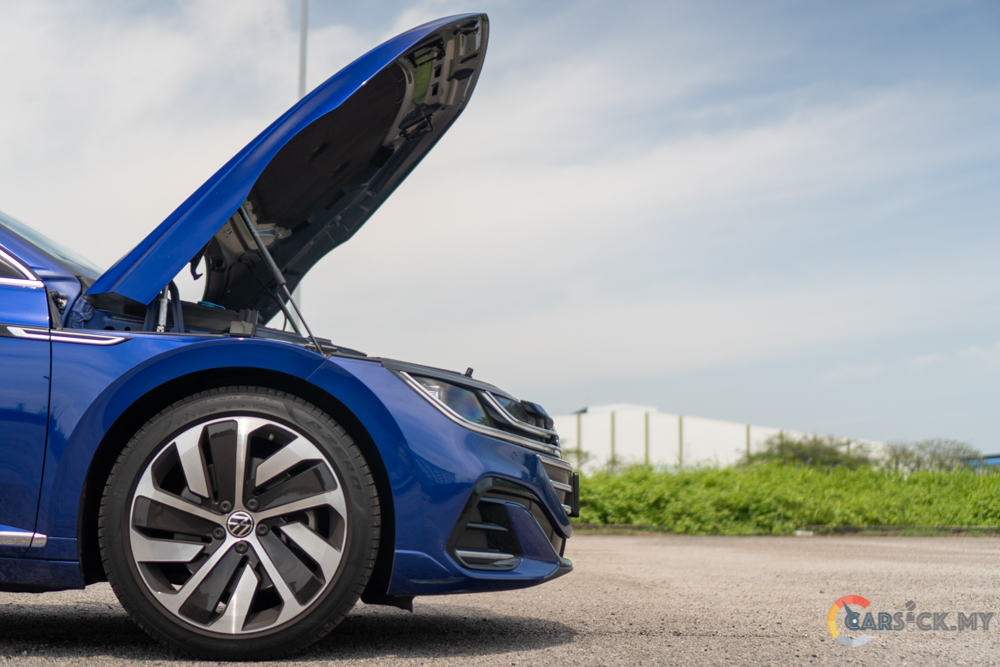
Other than the light bar, the 2022 Arteon replaces the R-line badges around the car with the proper R badges that were reserved for the full blown Arteon. One of my favorite features on the Arteon is the frameless doors, it makes the car look cool when the doors are open. At all corners, the large 19-inch rims does a great job in filling up the wheel arch gap for the Arteon. 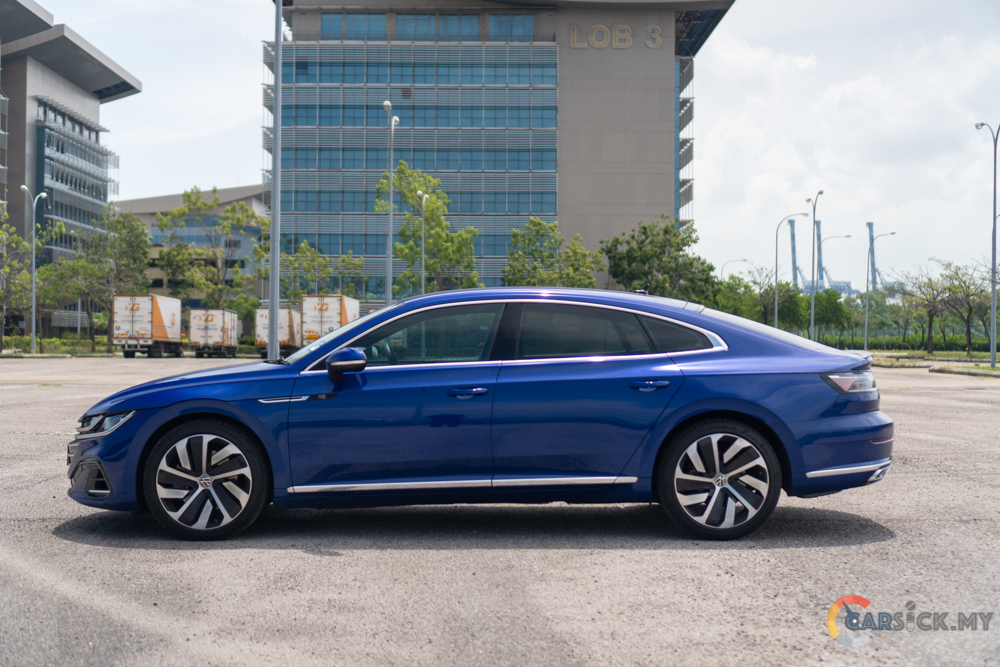
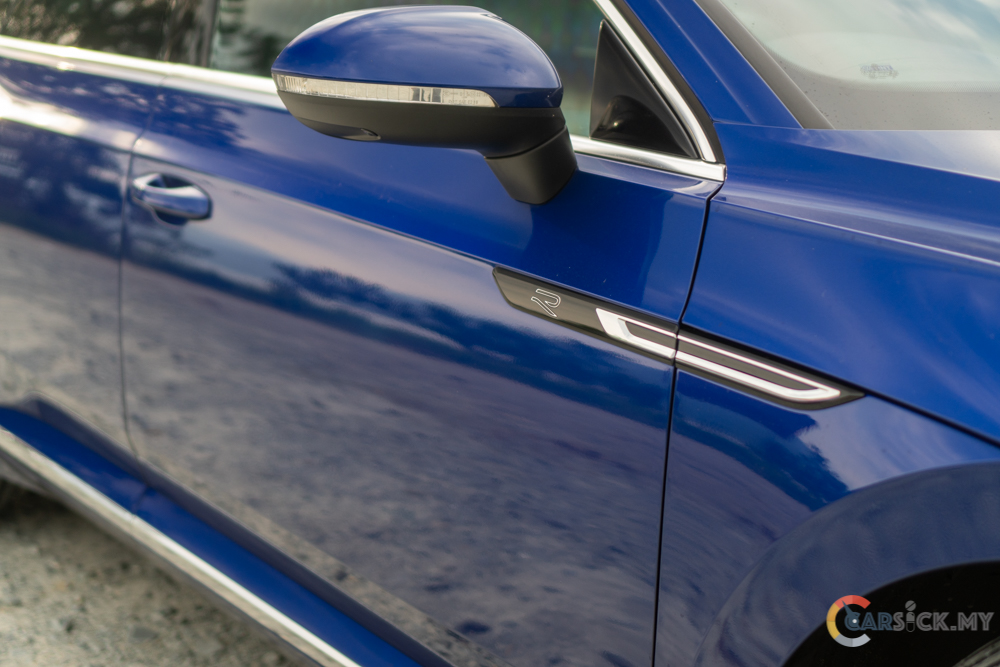
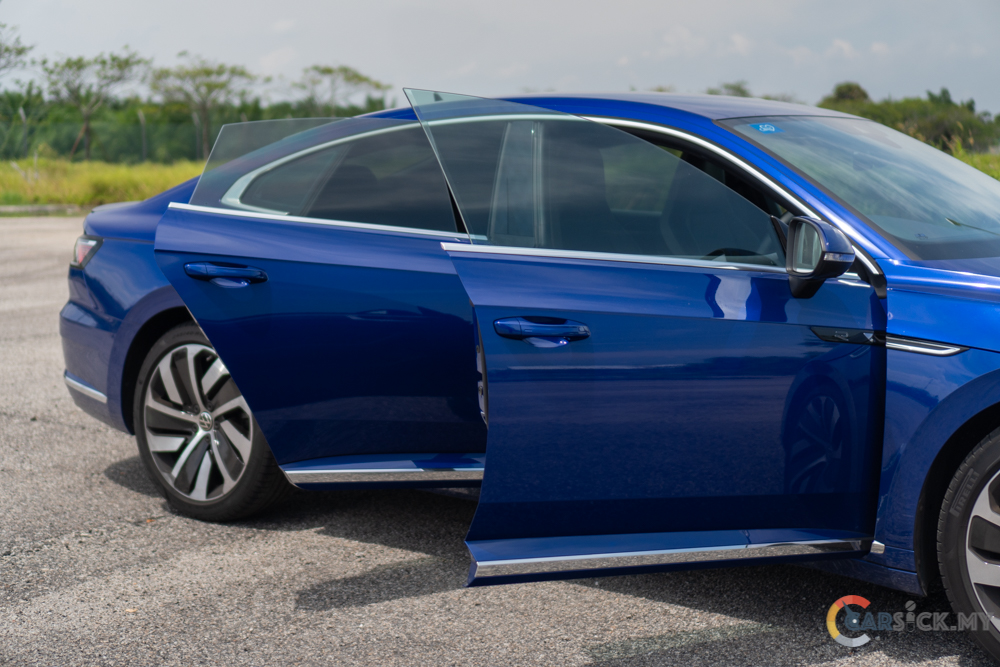
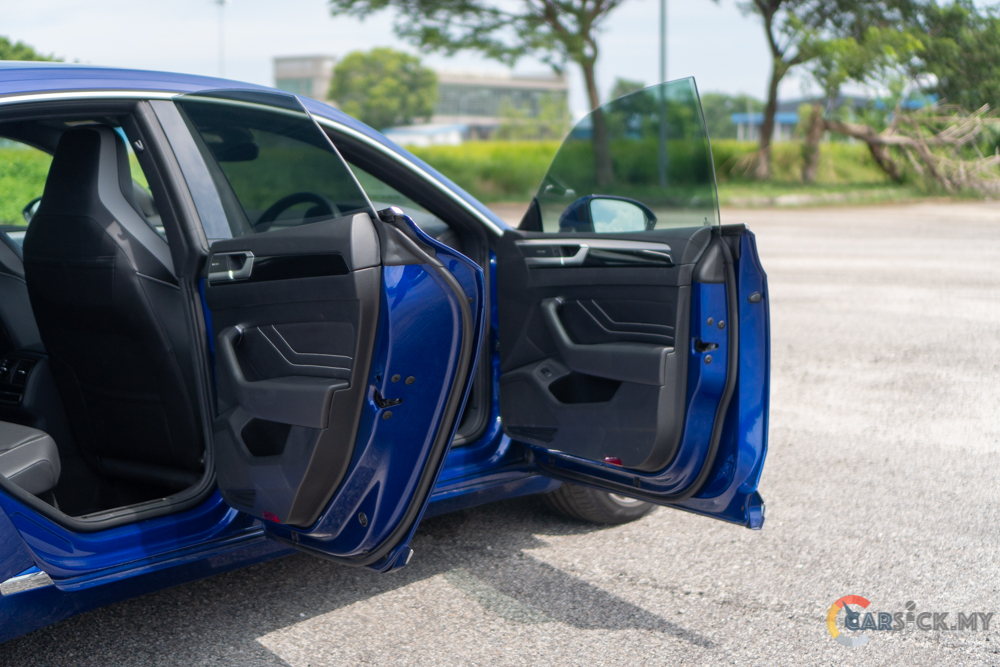
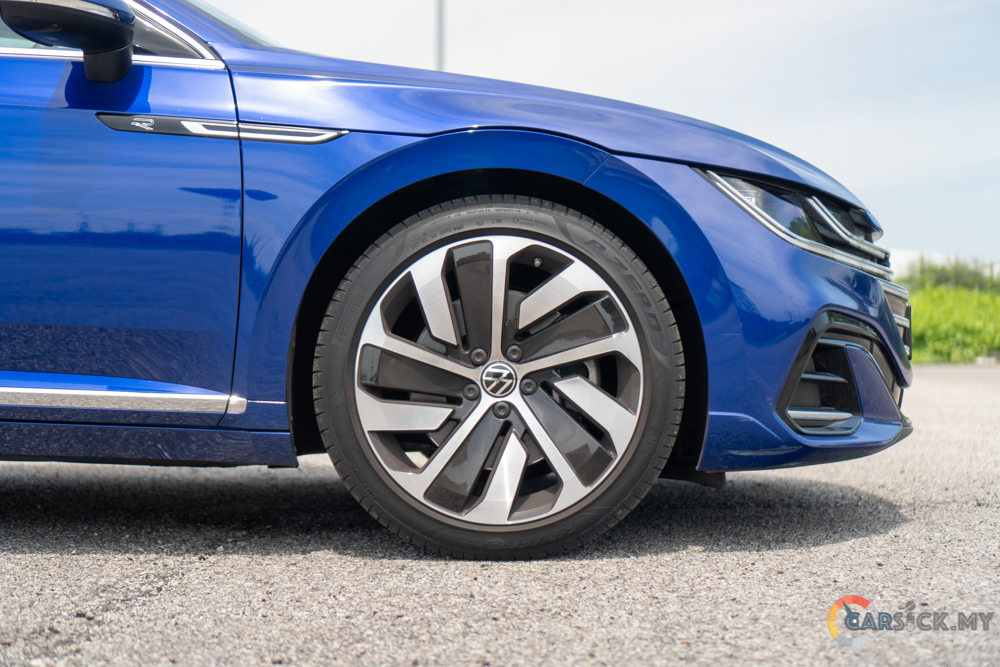
To further enhance the coupé profile, the rear roofline on the Arteon slopes down all the way to the boot. This means that the Arteon requires a large piece of glass to be used as the rear windscreen. Even though the rear windscreen is large, the view out of the rear windscreen is considerably small due to the angle of the glass. Lastly, the rear of the Arteon also features full LED taillights that blend in well with the overall design of the vehicle. 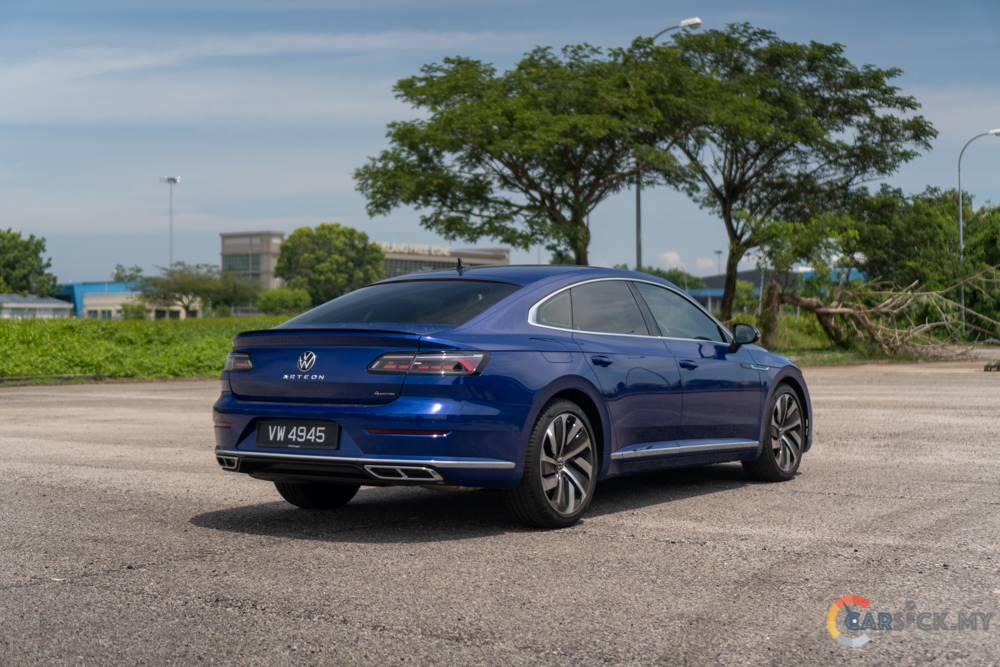
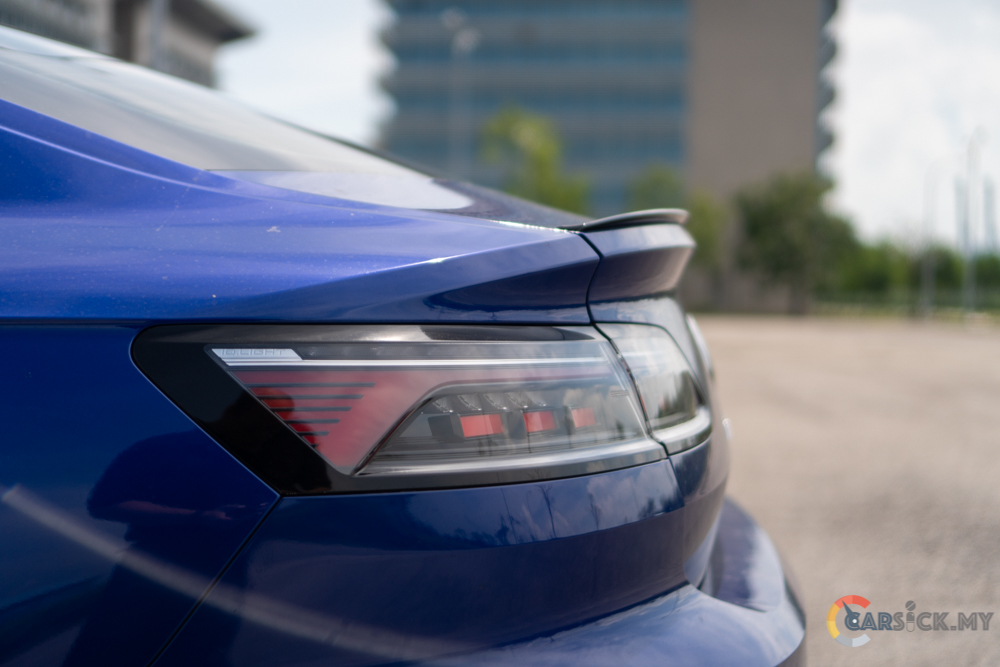
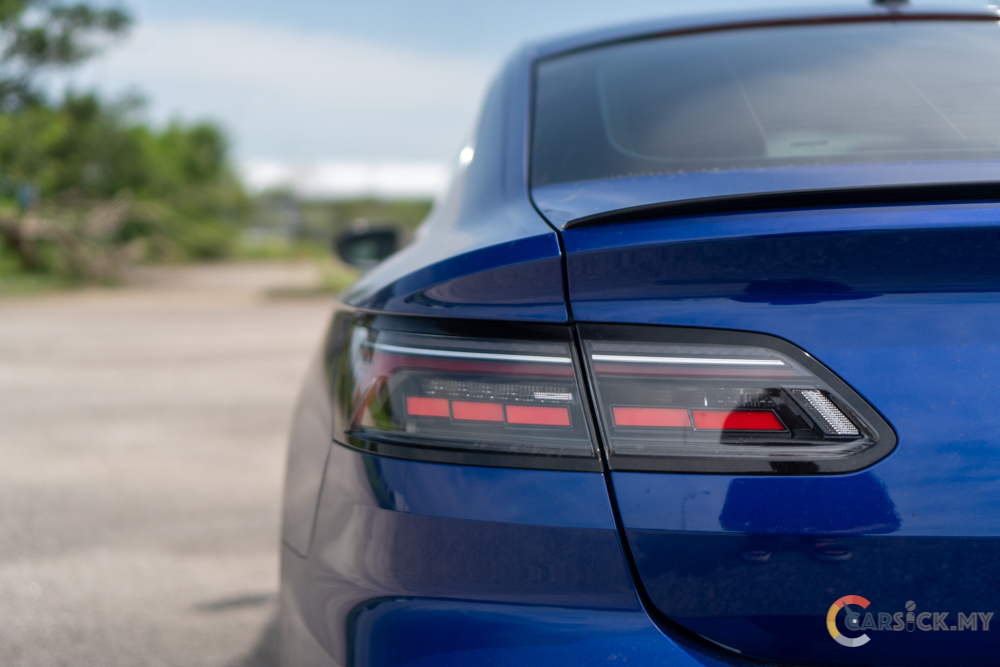
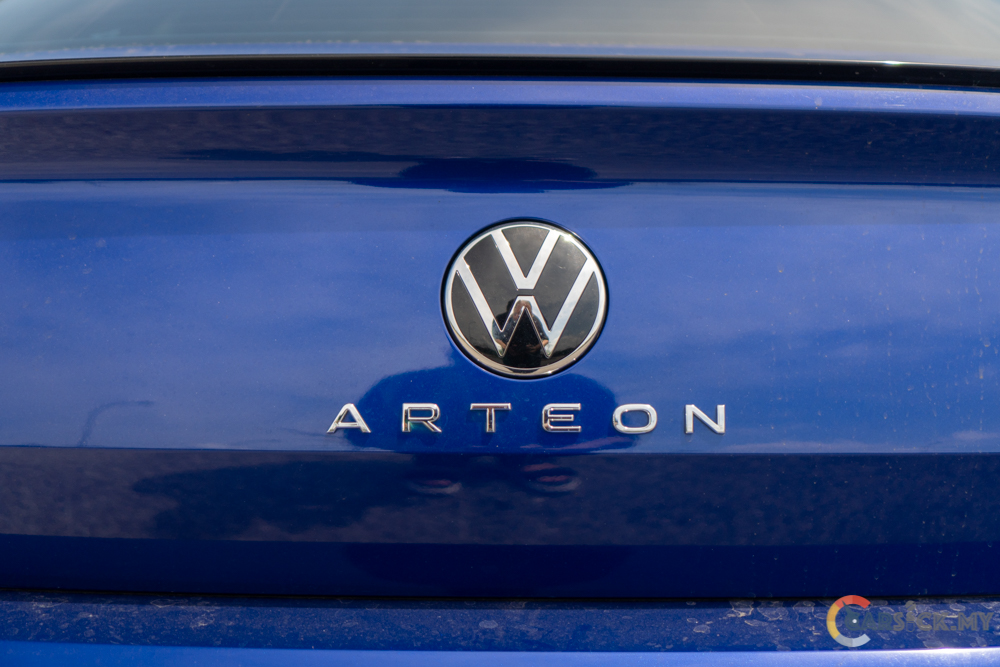
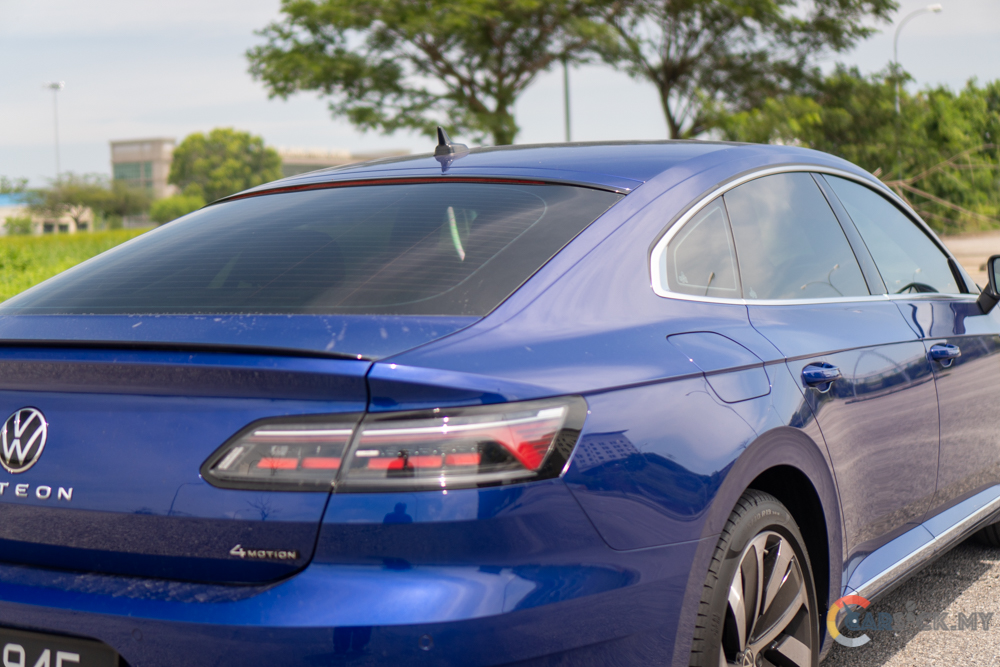
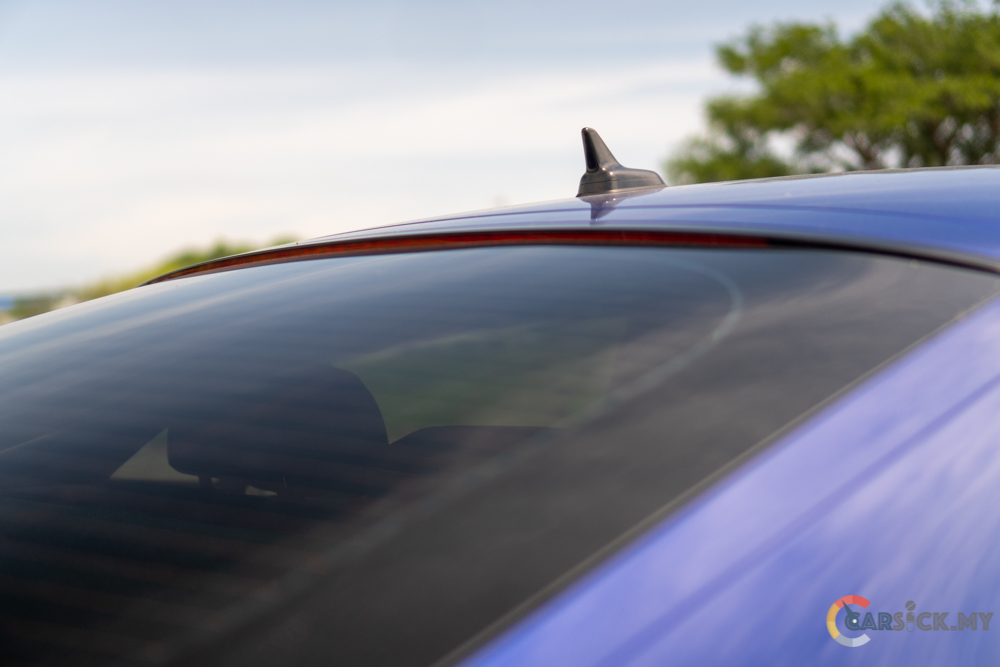
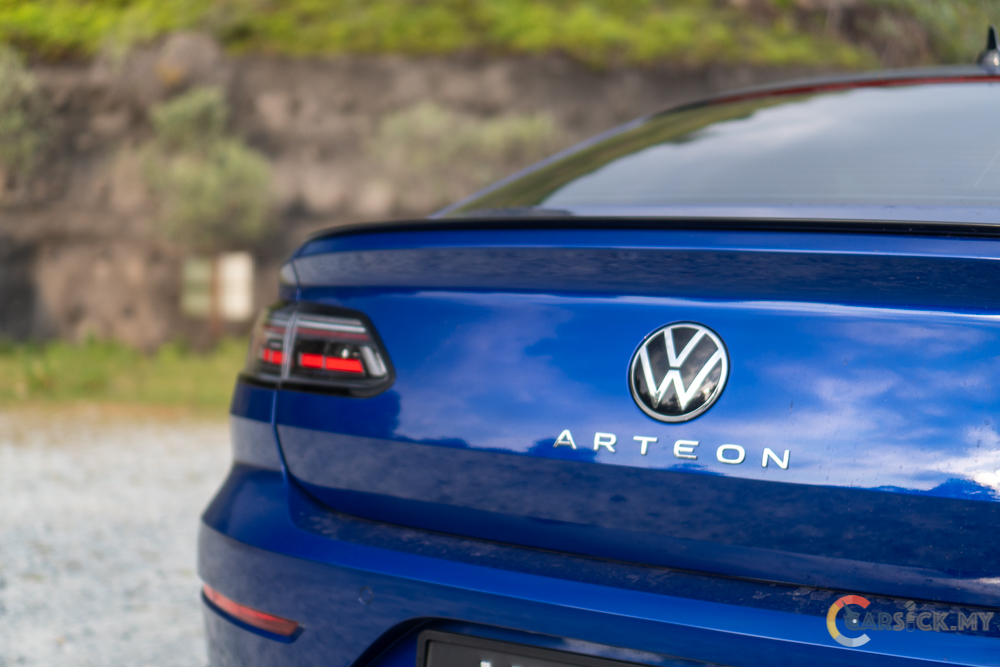
With the sloping rear roofline, the Arteon gets a hatchlike tailgate as the boot opening. When the tailgate is open, it allows owners easy access to the rather large boot in the Arteon. With 563L of boot space, the Arteon has slightly lesser boot space compared to the Passat, but it compensates with better accessibility to the boot. For those who needed more space, the rear seats can be folded down to allow longer items to be loaded into the Arteon, making this Arteon a very practical vehicle to be used daily. 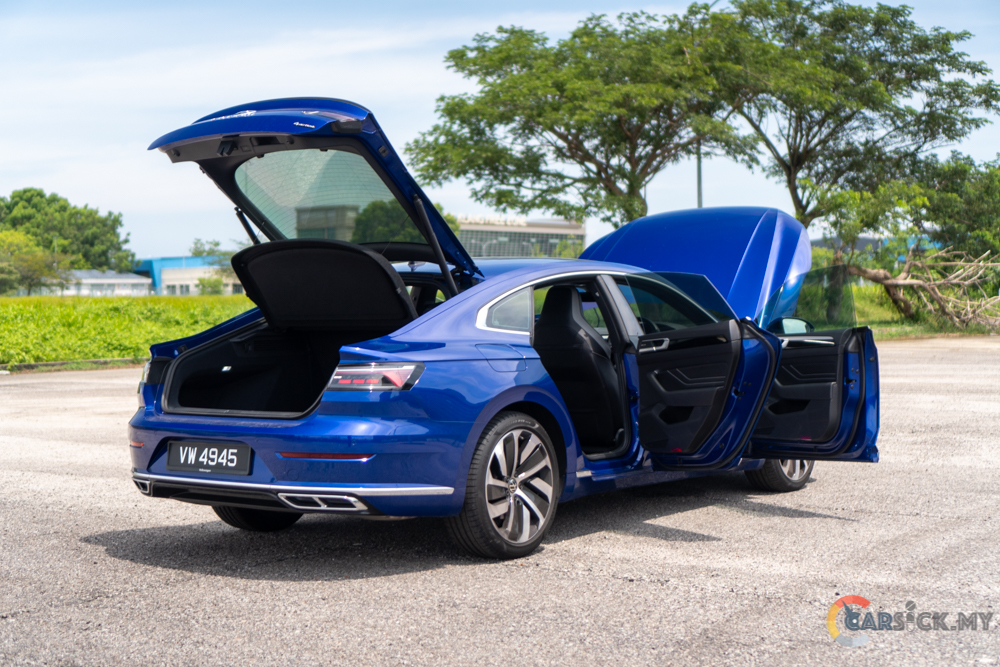
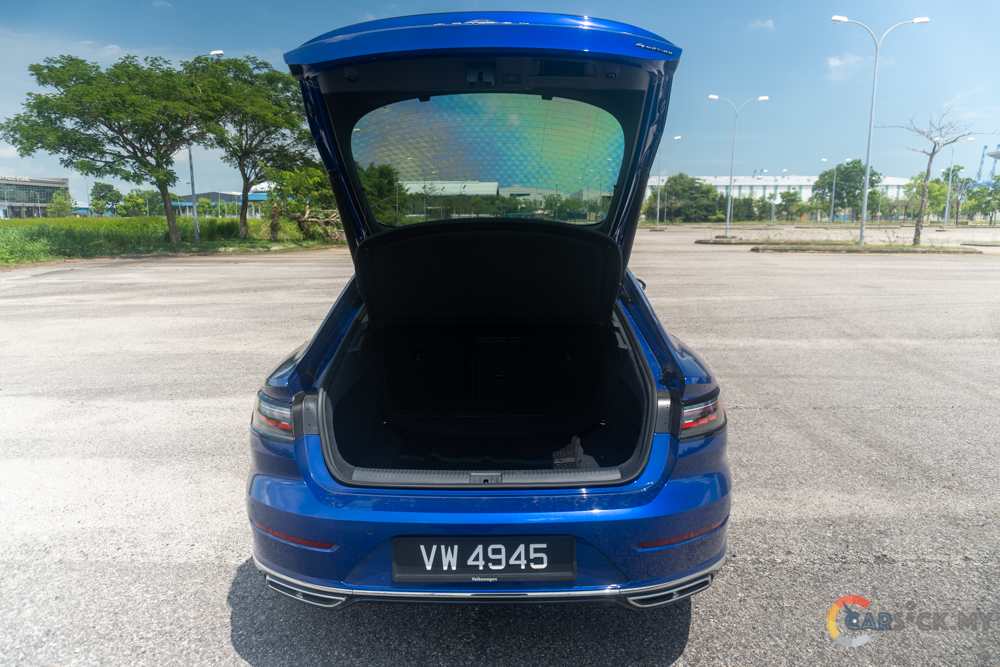
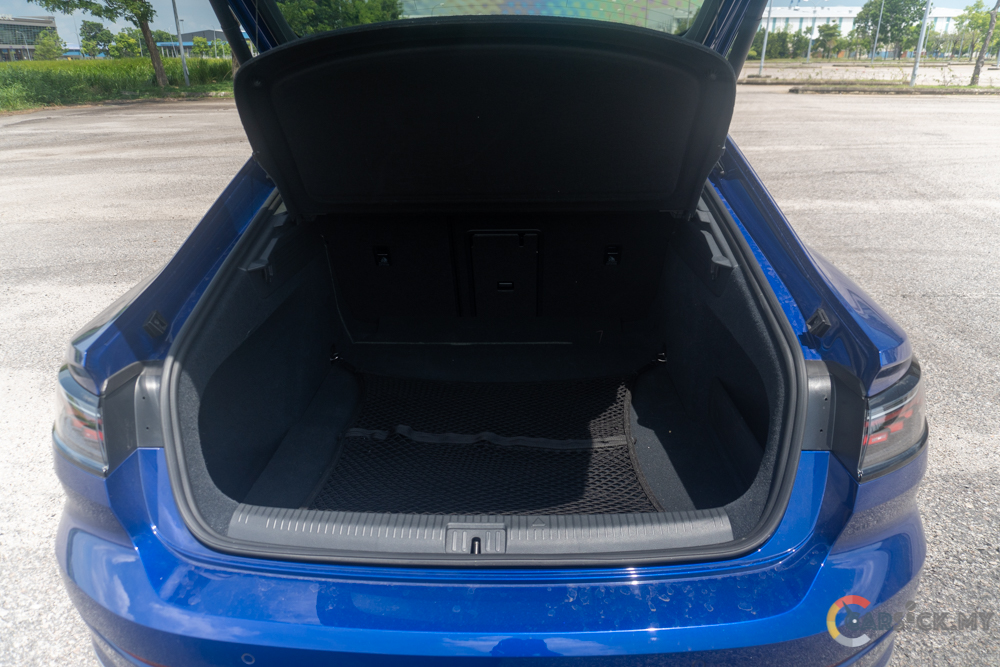
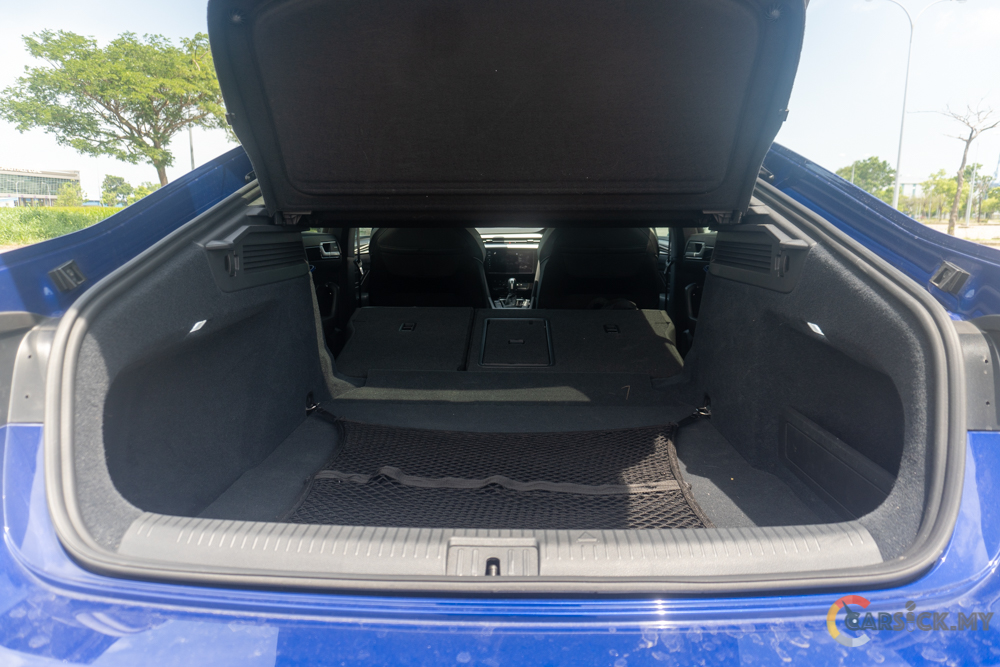
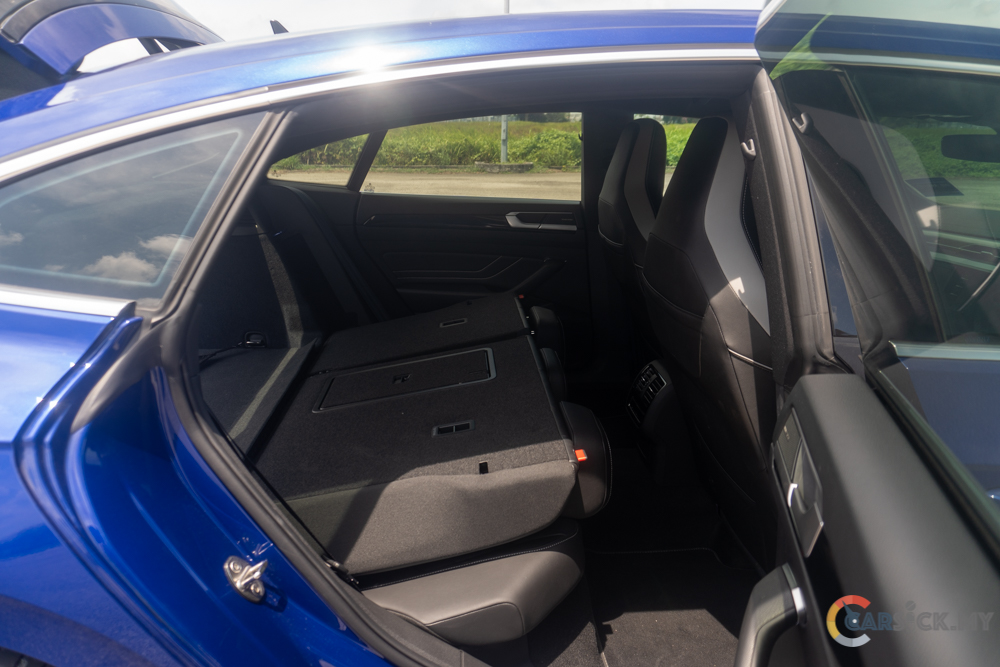
Getting behind the wheel, I’m greeted by a familiar dashboard that was seen on other Volkswagen models. These models include the Passat and the Tiguan, which uses shared components such as the instrument cluster, infotainment screens, and the climate controls, making familiarizing with the car an instant affair. For the ultimate in-car experience, the Arteon also gets the 700W 11-speaker Harman Kardon sound system to provide the in-car entertainment. 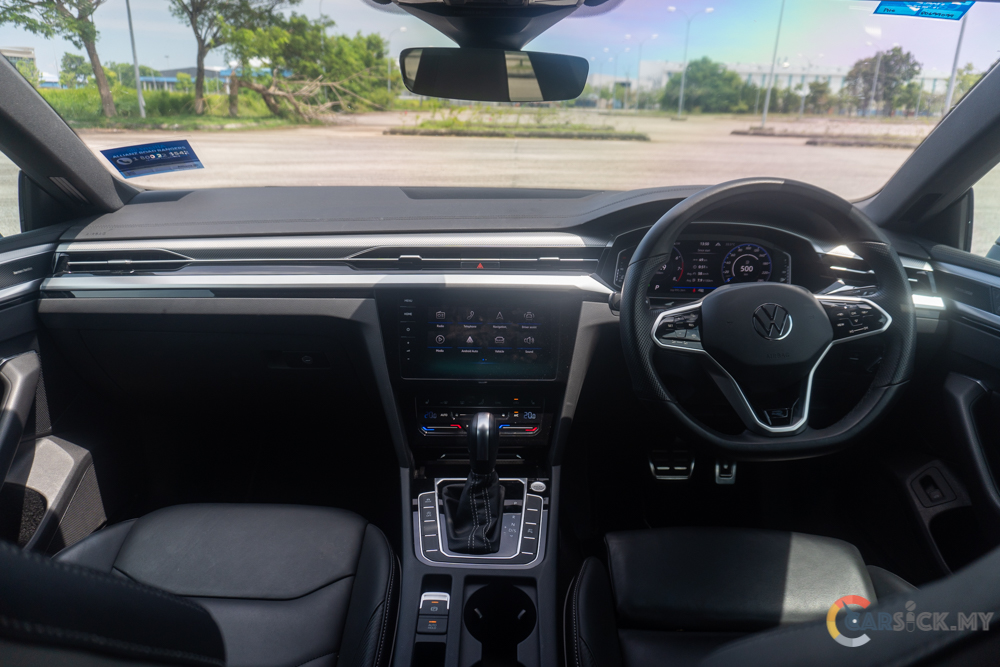
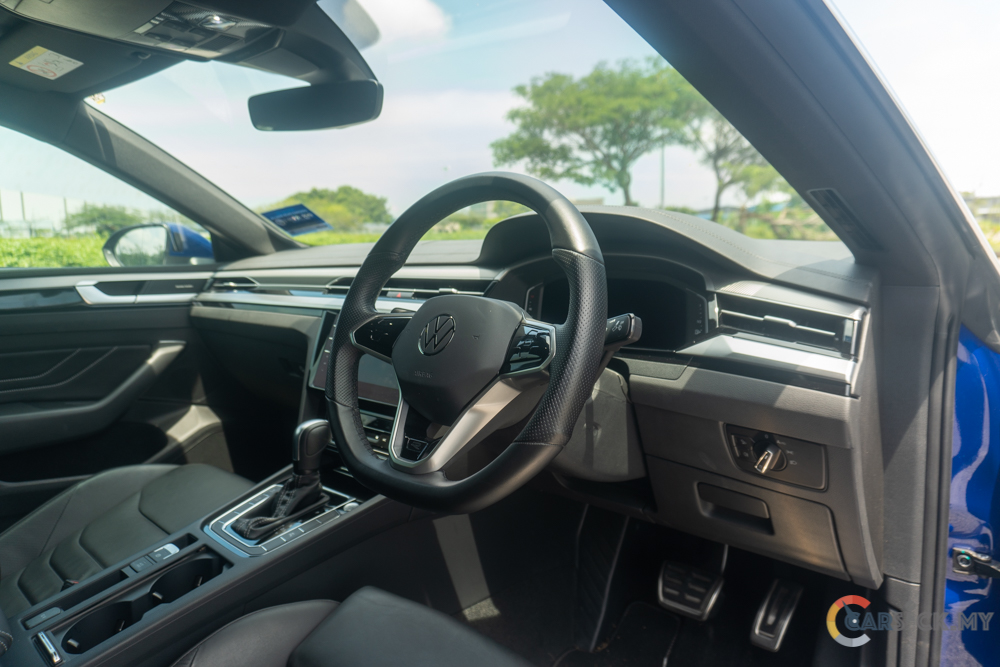
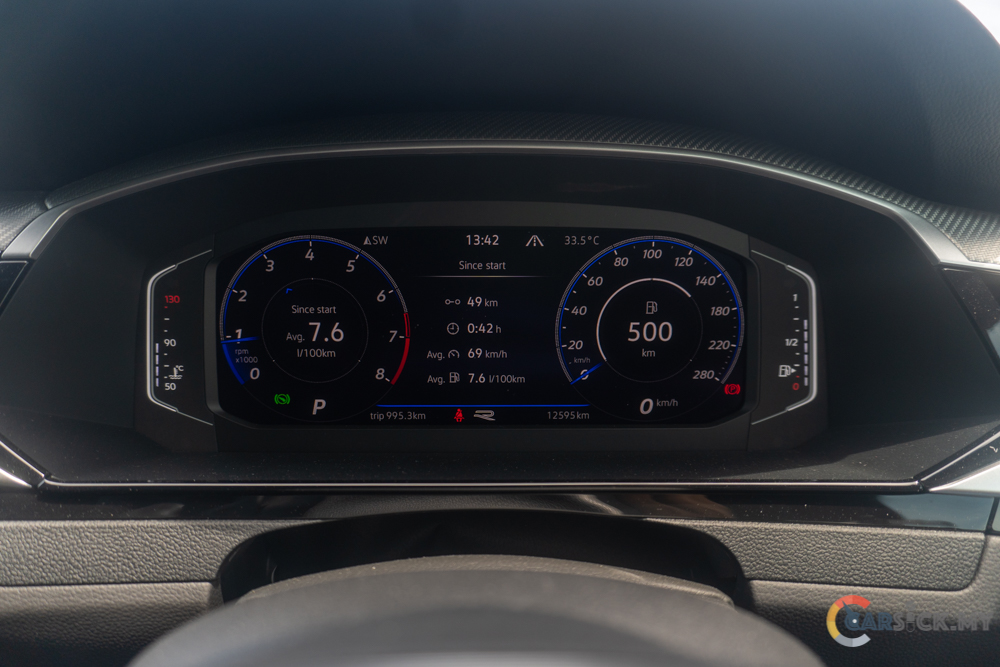
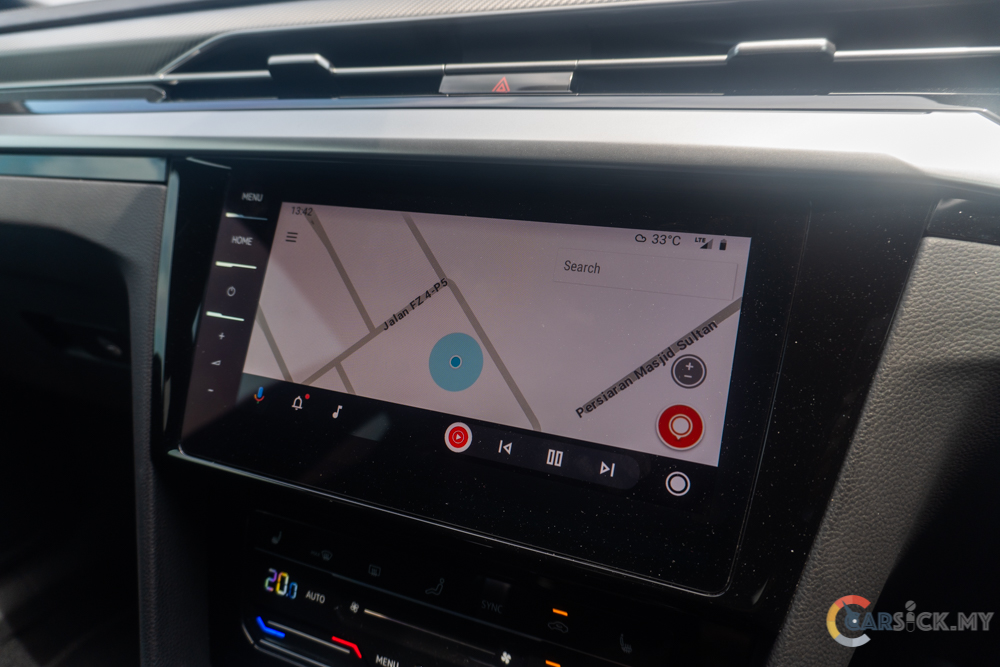
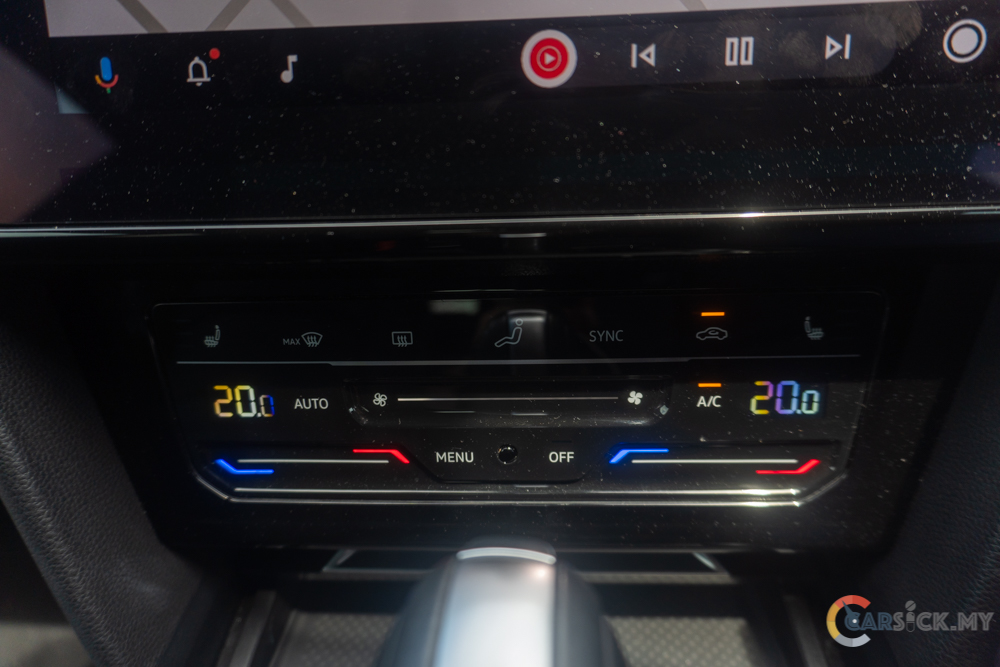
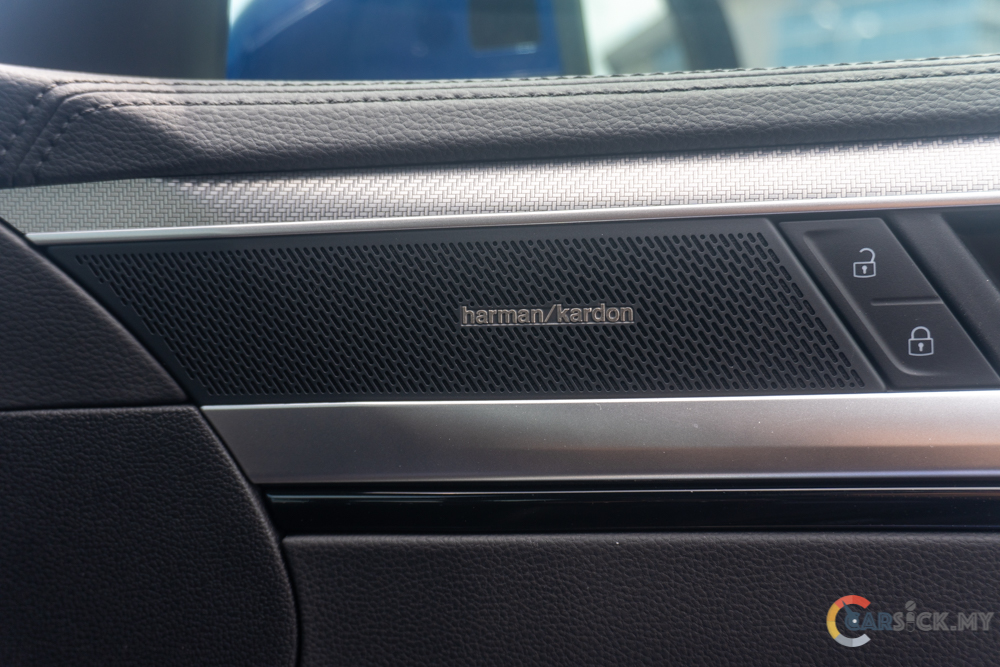
As for the seats, the driver and front passenger get body hugging semi bucket seats that are comfortable and supportive. These seats do a great job in keeping the driver and front passenger in place when driving on twisty roads. The driver seat also features the massage function to keep the driver relaxed when driving over long distances. For the rear seats, rear passengers get plenty of legroom to move their feet around, and the sloping roofline did not eat into the headroom space of the rear passengers. 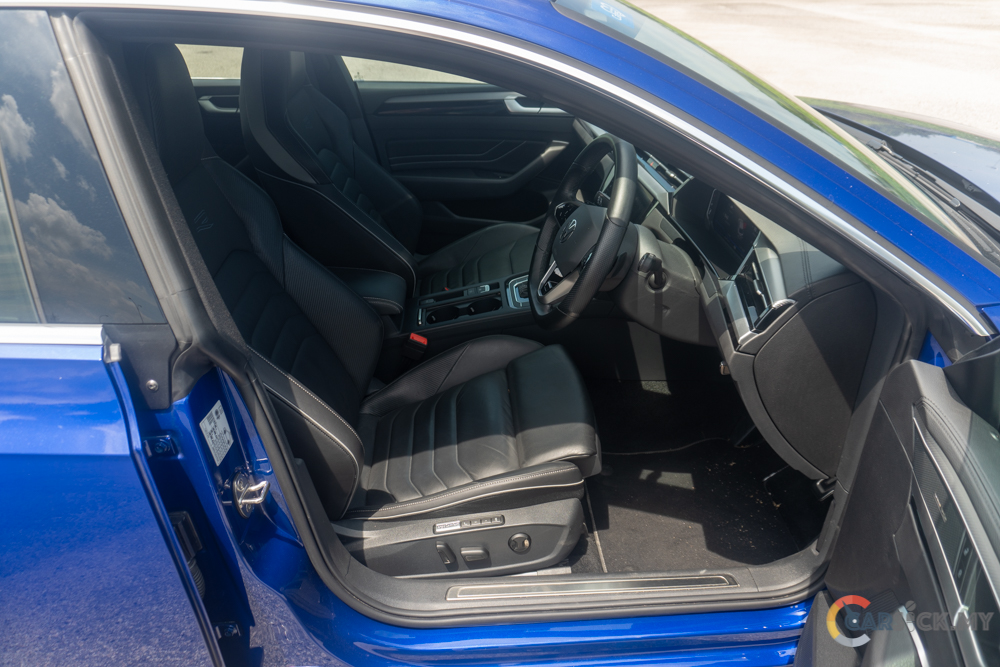
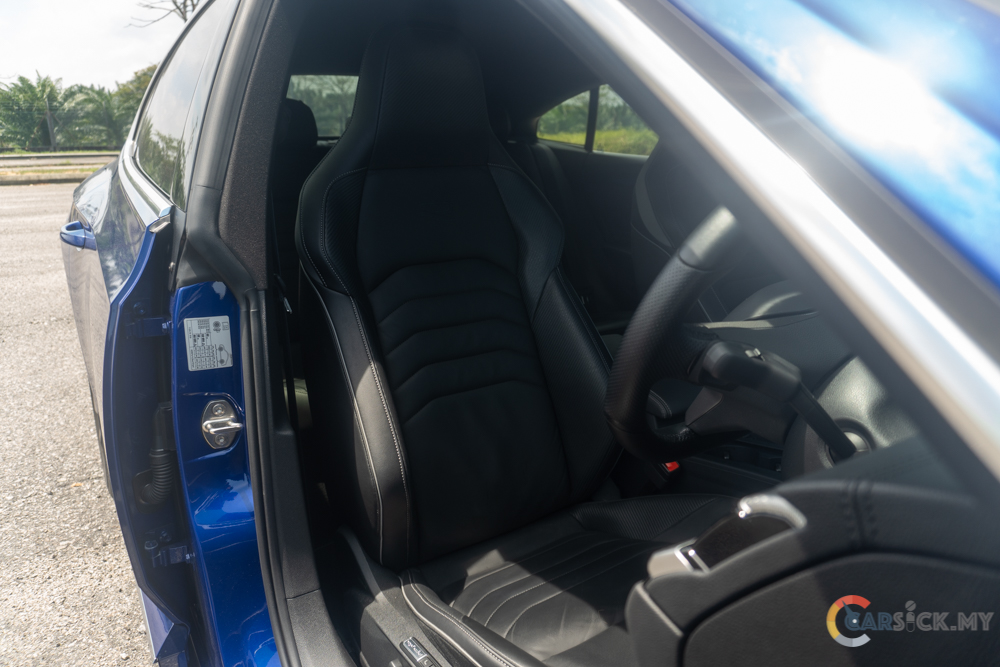
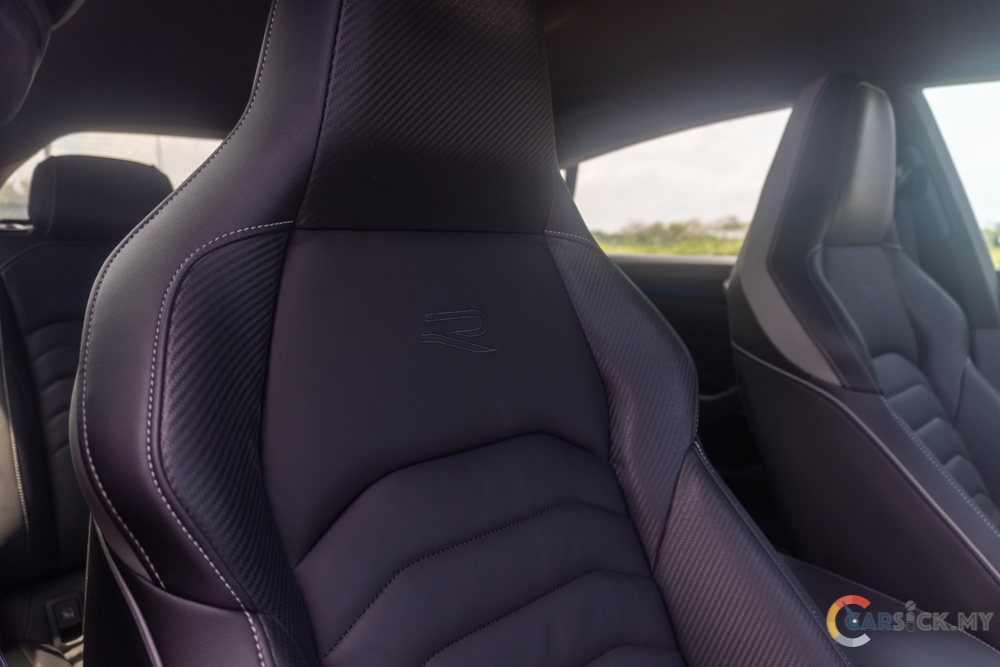
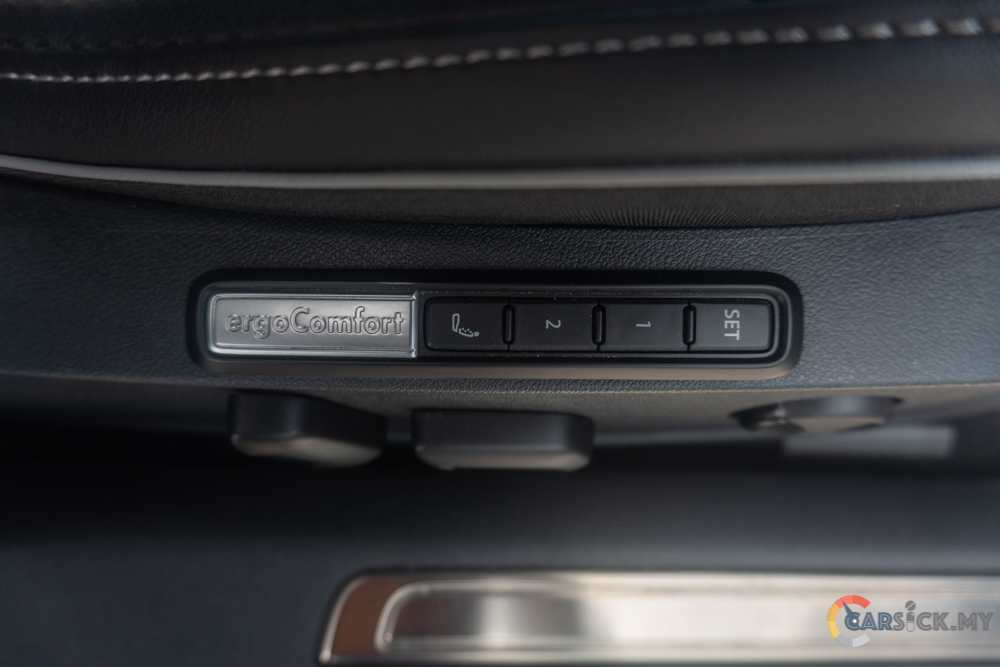
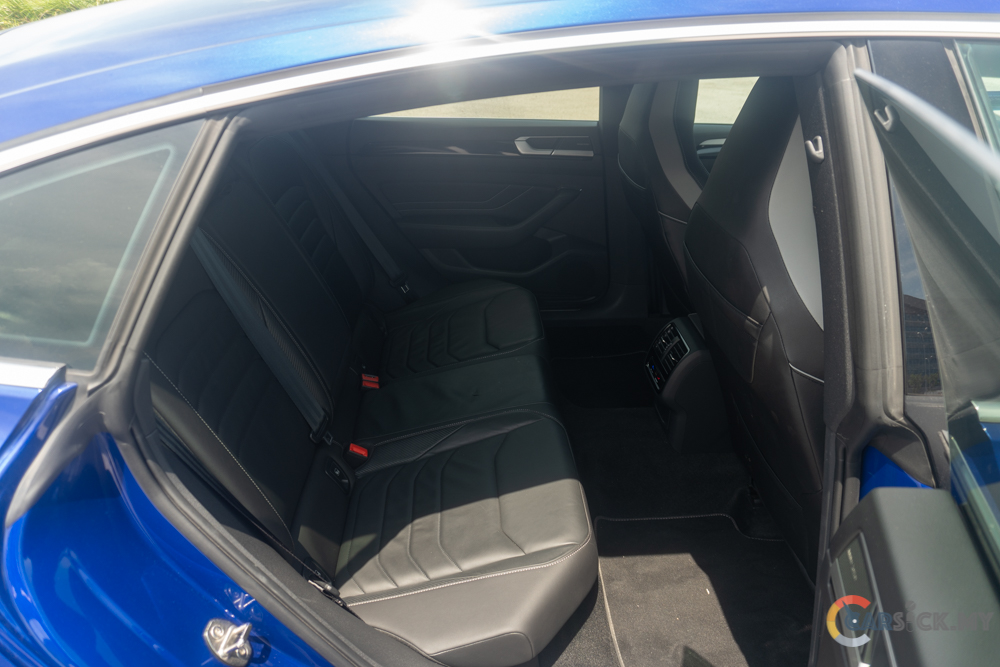
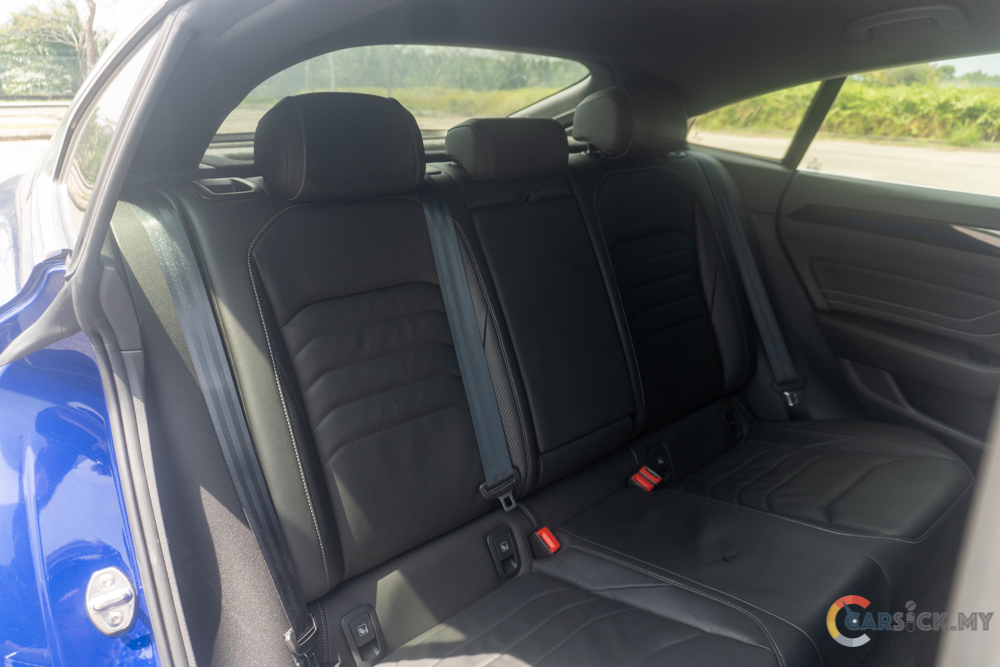
Powering the Arteon is the familiar EA888 engine, but in a higher state of tune. This engine is mated to a 7-speed DSG and power is sent to all 4 wheels through the 4motion all wheel drive system. The engine in the Arteon has the ability to produce 280PS at 5,100 – 6,500 rpm and a peak torque of 350Nm at 1,700 – 5,600 rpm. The Arteon can hit the 100km/h mark from standstill in 5.6 seconds, and to a top speed of 250 km/h. 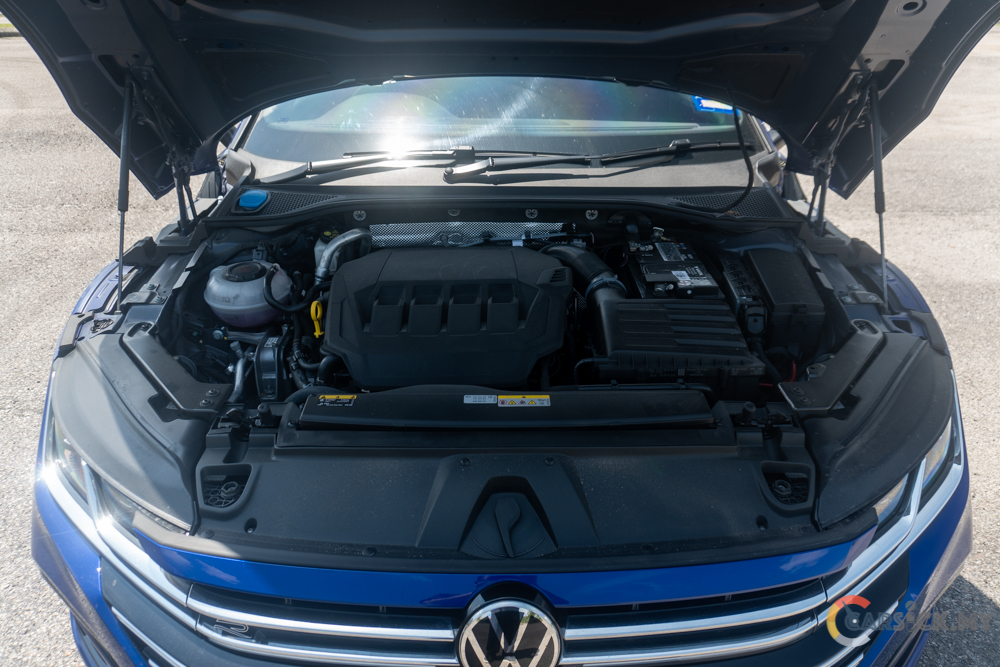
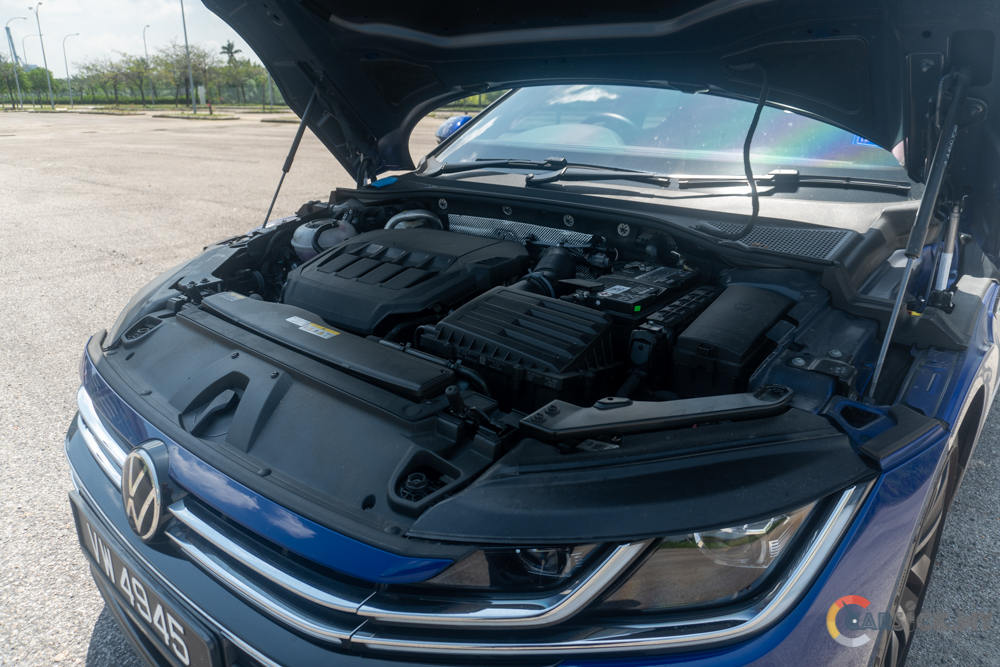
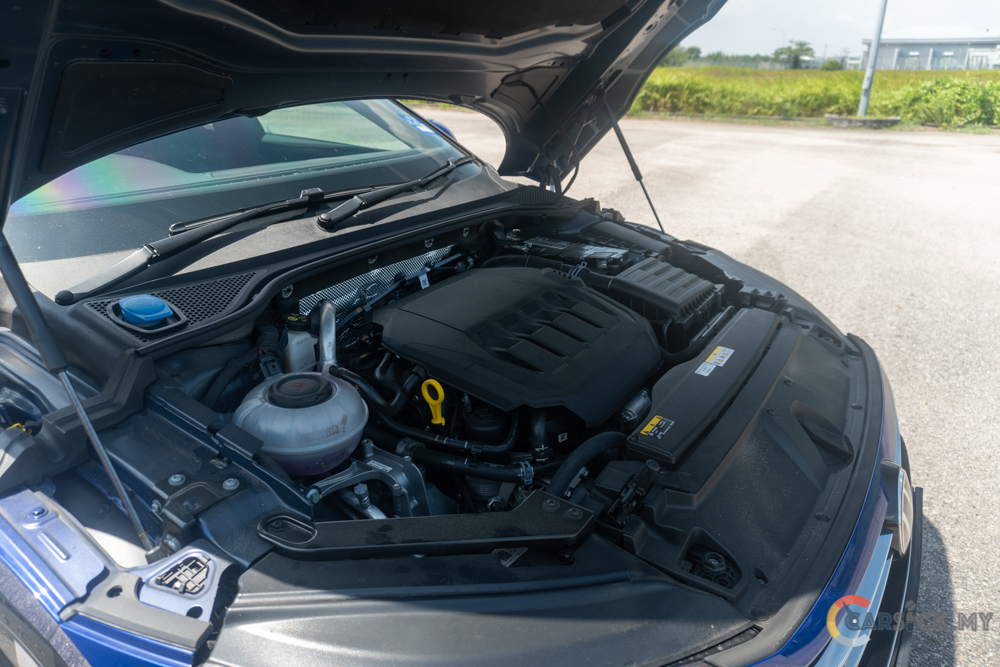
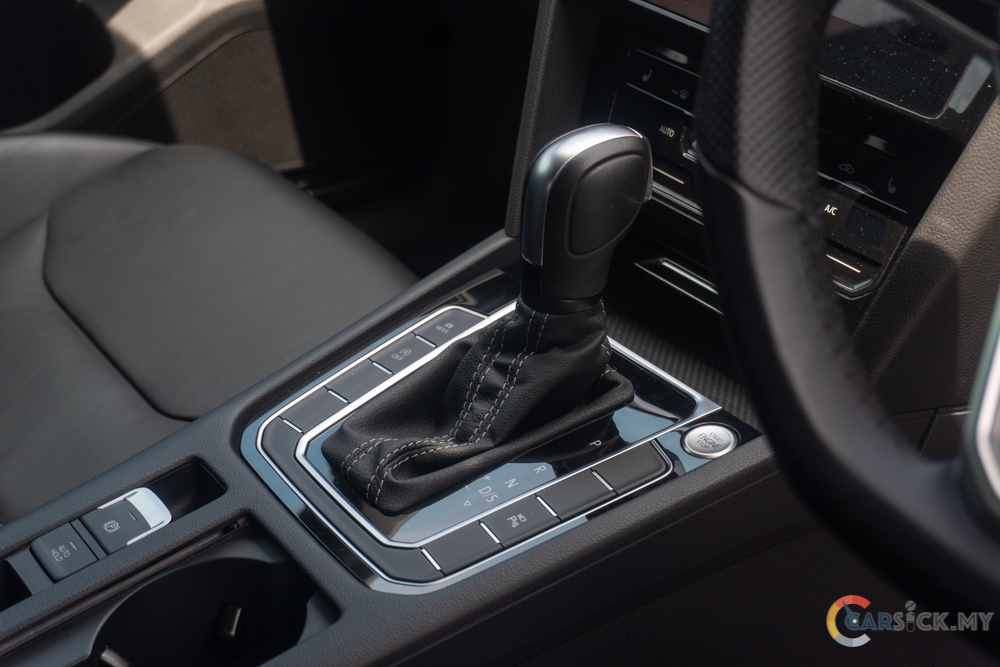
At lower speeds, the Arteon drives like any other Volkswagen that comes equipped with this engine. The additional horsepower only comes out at higher engine RPM, which helps the car to reach the national speed limit at an even quicker pace. Turbo lag is also kept to a bare minimum on acceleration, making it feel like a naturally aspirated engine. Furthermore, the bump in performance did not really hinder the fuel economy, as I’m getting fuel economy figures that are pretty similar to the Passat and Tiguan siblings.
Paired with the 4motion all wheel drive system, the Arteon is a stable vehicle when exiting corners. Together with the precise steering wheel, the Arteon will allow many amateur drivers to drive fast on twisty roads without much drama. The driving experience is also further enhanced by having the adaptive suspension on the car. In regular mode, the suspension does a great job in soaking up most road imperfections. In sports mode, I can definitely feel the car hops over uneven roads as the dampers stiffen up. 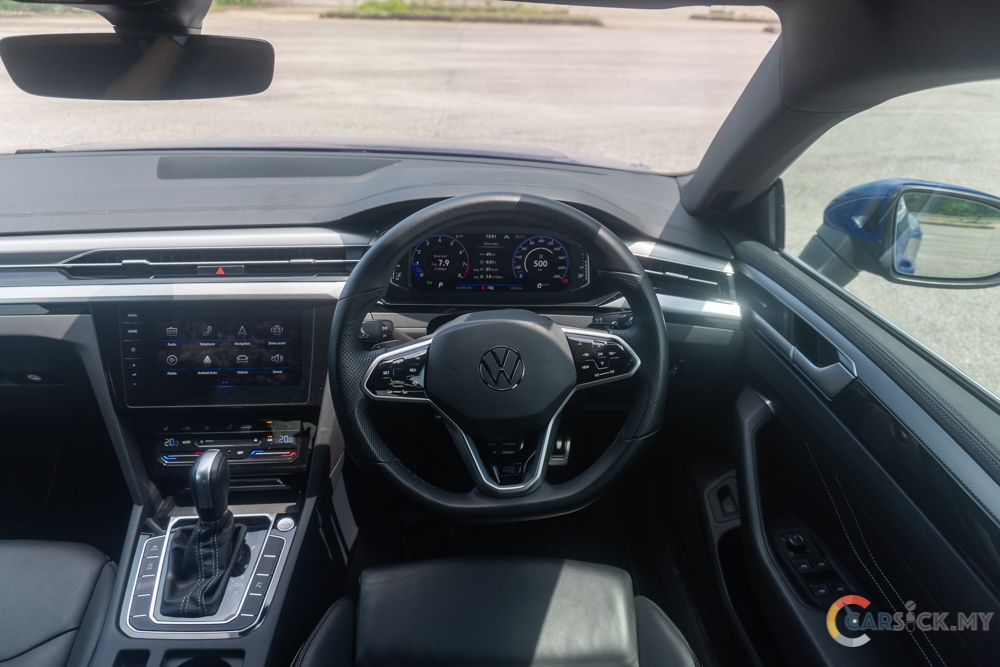
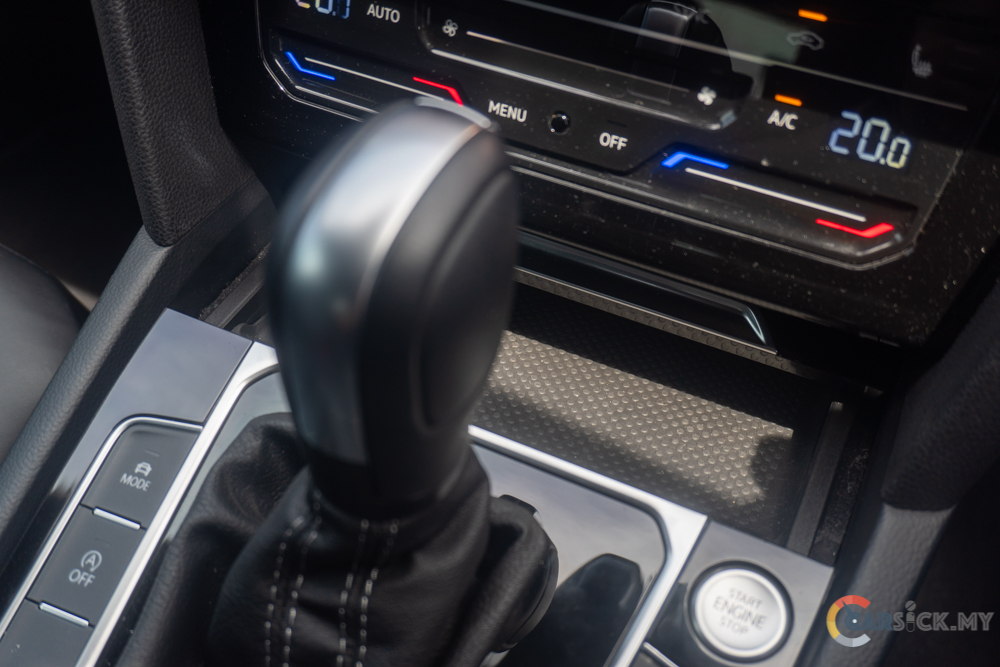
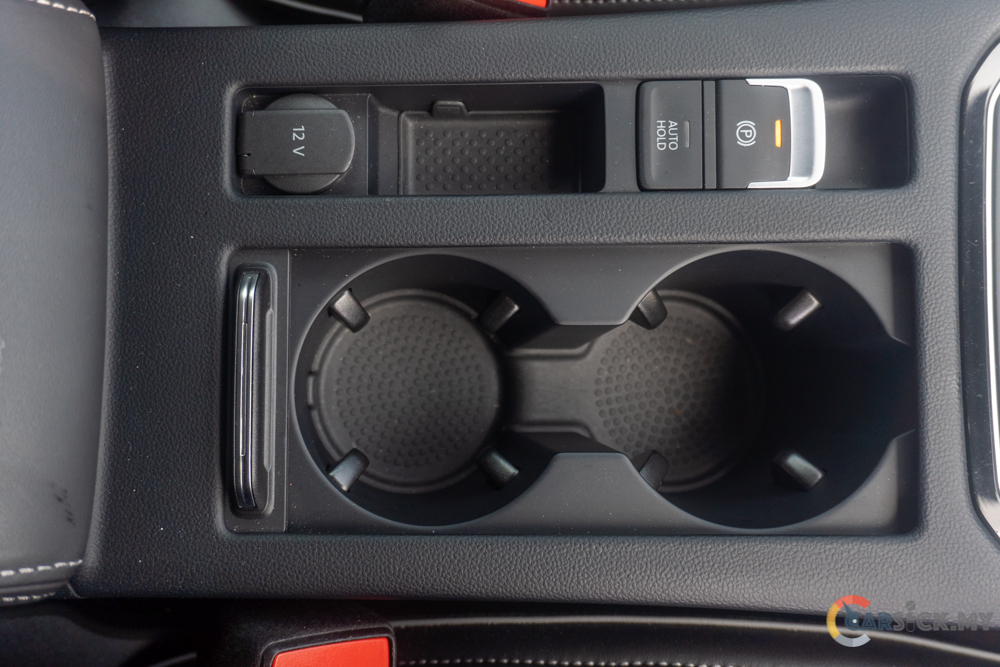
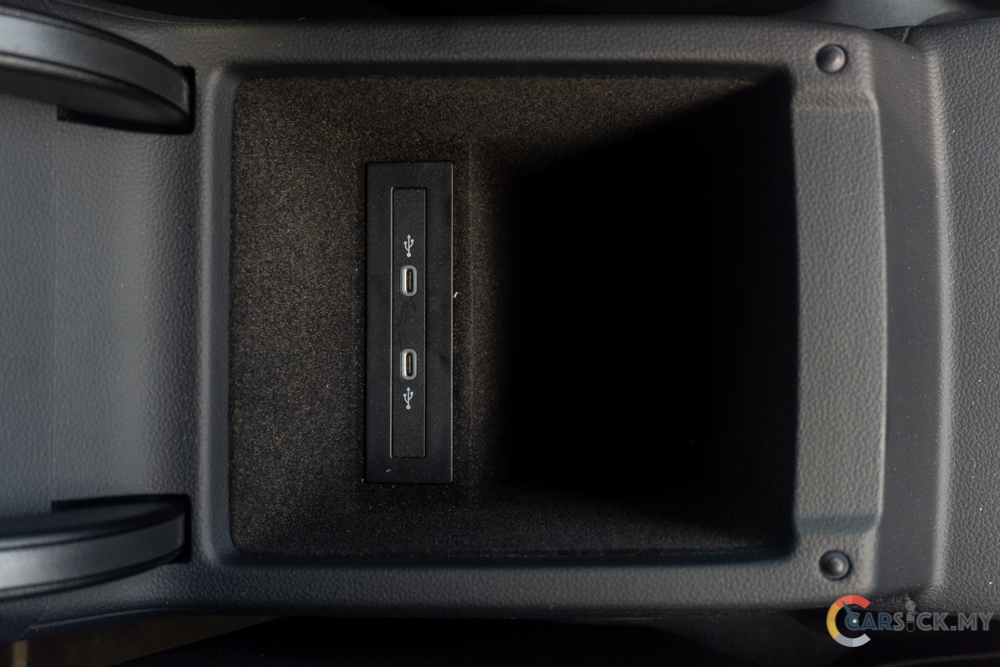
Before we speak about safety, I would like to mention that the turning circle on the Arteon is not as tight as I would’ve expected. It did catch me off guard when I was trying to maneuver out from a tight space. Just like any Volkswagen model, advanced driver assistance systems are still lacking on the Arteon. This is one department Volkswagen needs to improve with their models if they want to attract more buyers to the brand.
The safety and driver assistance systems available in the Arteon include 7 airbags, Anti-skid regulator (ASR), Anti-lock brake system (ABS), Driver alert system, Electronic Differential Lock (XDS), Electronic Stability Control (ESC), Hill Hold Control (HHC), Tyre Pressure Monitoring System with pressure display, Lane Assist – lane keeping assist system, and Side Assist – lane change assist system.
To conclude, I personally really like the Arteon and its capability. The Arteon is a car that has style, performance, space, and practicality. It only lacks driver assistance system to turn the car into a perfect 1 trick pony. Anyway, the Arteon is close to being a perfect car that I would use for both daily commute and weekend drives. Priced at RM266,990, the Arteon is the perfect car for the car enthusiast who only can accommodate 1 car in their garage.
Check out full image gallery here. 